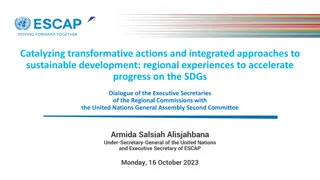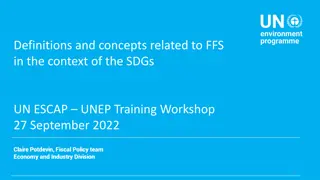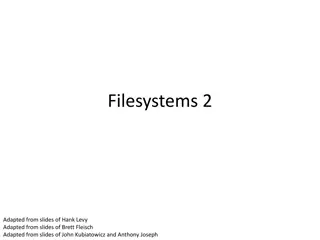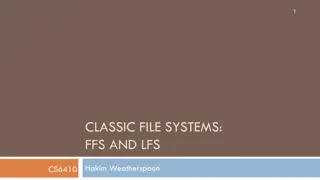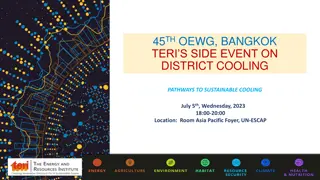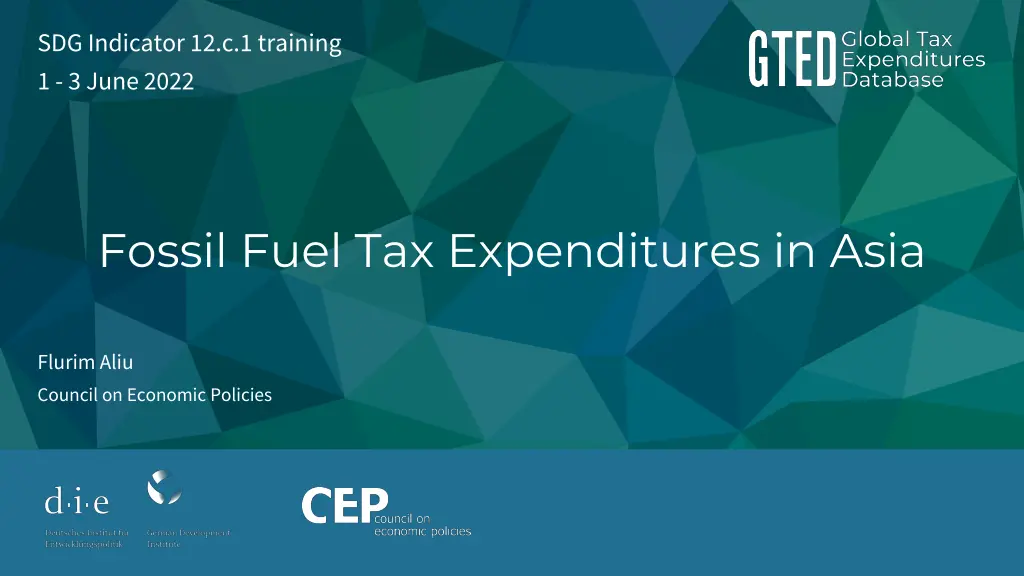
Understanding Global Tax Expenditures Database and Fossil Fuel Tax Expenditures in Asia
Explore insights on tax expenditures policy, revenue forgone, and reporting trends worldwide. Learn about the impact of fossil fuel tax expenditures in Asia and the significance of the Global Tax Expenditures Database in monitoring fiscal data.
Download Presentation

Please find below an Image/Link to download the presentation.
The content on the website is provided AS IS for your information and personal use only. It may not be sold, licensed, or shared on other websites without obtaining consent from the author. If you encounter any issues during the download, it is possible that the publisher has removed the file from their server.
You are allowed to download the files provided on this website for personal or commercial use, subject to the condition that they are used lawfully. All files are the property of their respective owners.
The content on the website is provided AS IS for your information and personal use only. It may not be sold, licensed, or shared on other websites without obtaining consent from the author.
E N D
Presentation Transcript
SDG Indicator 12.c.1 training 1 -3 June 2022 Fossil Fuel Tax Expenditures in Asia Flurim Aliu Council on Economic Policies GTED -Global TaxExpendituresDatabase 1
Background on Tax Expenditures Governments pursue different policy goals, e.g. greening the economy, boosting investment and innovation, creating jobs, through: 1.Direct spending 2.Tax expenditures (TEs) tax benefits that reduce taxpayers liability as well as revenue collection (revenue foregone) Relation to FFS: 63% of the $480+ Billion USD spent on FFSs in 2019 came in the form of TEs (OECD, 2021) GTED - Global Tax Expenditures Database 2
Introduction to Global Tax Expenditures Database First global database covering the whole universe of tax expenditures What data does the GTED gather? Scope of collected data: Types of Info: Revenue Forgone, Tax Base, TE Type, Beneficiaries, Policy Objective, Legal Reference, etc. Official Publicly-Available Period Covered: 1990-Present Countries Covered: 102 TE Reporting and 116 TE Non-Reporting Following Country-Specific Benchmarks GTED - Global Tax Expenditures Database 3
Increasing numbers of countries have been reporting on TEs since the 1990s 90 80 70 Number of Reports 60 50 40 30 20 10 0 1990 1995 2000 2005 2010 2015 2020 Numbers may be subject to delayed reporting GTED - Global Tax Expenditures Database 4
High income countries forgo the most revenue through TEs in terms of GDP 1990-2020 30.0 27.5 27.1 23.1 25.0 Revenue Forgone 18.2 20.0 15.0 10.0 4.5 4.0 2.8 5.0 2.6 0.0 LICs [13] LMICs [26] UMICs [26] HICs [37] Income Group Revenue Forgone (% of GDP) Revenue Forgone (% of Tax Revenue) GTED - Global Tax Expenditures Database 5
The variation in the quality of reporting is not a low-income country-specific issue 53 ESCAP members 32 do not report on tax expenditures, and only 14 report provision-level data regularly 42countries worldwide publish reports with provision-level data on a regular basis, most of them members of the OECD or the EU 27EU member states 3do not report on tax expenditures at all, and 10 only provide aggregate information 46G20 and OECD countries 3do not publish any official tax expenditure information, and 11 only report aggregate estimates GTED - Global Tax Expenditures Database 6
Two-thirds of total fossil-fuel support takes the form of TEs Fossil fuel subsidies (FFSs) add up to USD 468 billion across 81 economies, representing 90% of global total primary energy supply (OECD, 2021) TEs are, by far, the largest component: 63% of the more than 1300 total FFSs measures (62% by value) in the OECD Inventory are TEs (OECD, 2021) FFSs by type of Support Direct Transfers Tax Expenditures GTED - Global Tax Expenditures Database 7
UNEP CEP Project Background Pre-fill reporting Templates 89 39 Countries with FFS TE data, worldwide Develop Data Gap Indicators of which, GTED-only Develop Reporting Checklist GTED - Global Tax Expenditures Database 8
Main problem areas with reporting of FFSs TEs Absence of key information on FFS TEs Incomplete coverage of the TE report Absence of key TE information Lack of detail in TE reporting Changes in TE Reporting Methodology Time-series gaps Proliferation of FFSs TEs GTED - Global Tax Expenditures Database 9
Indicators for three ESCAP members Problem Area 1. Lack of detail in TE reporting Indicator 1.1: Data type in latest report Best Country B Country C Provision Provision Aggregate 2. Incomplete coverage of the TE report Indicator 2.1: Number of tax bases covered by the TE report 3 X 1 5 X Indicator 2.2: Report only covers one sector/activity/policy goal 3. Changes in TE reporting methodology Indicator 3.1: Number of changes in reporting structure (5 years) N/A None N/A None 2 1 Indicator 3.2: Number of benchmark changes (5 years) GTED - Global Tax Expenditures Database 10
Indicators for three ESCAP members, continued Problem Area 4. Absence of key TE information Indicator 4.1: Share of provisions with revenue forgone estimates Best Country B Country C 66% 100% 96% 97% 83% 82% 100% 100% 82% 100% 0% 0% N/A 100% 100% 52% 0% 0% Indicator 4.2: Share of revenue forgone with tax-base information Indicator 4.3: Share of revenue forgone with TE-type information Indicator 4.4: Share of revenue forgone with beneficiary information Indicator 4.5: Share of revenue forgone with policy-objective information Indicator 4.6: Share of revenue forgone with legal references 5. Time-series gaps Indicator 5.1: Number of missing years between start of reporting and 2020 None 1 None GTED - Global Tax Expenditures Database 11
Indicators for three ESCAP members, continued Problem Area 6. Absence of key information on FFS TEs Indicator 6.1: Share of FFS TE provisions with revenue forgone information Best Country B Country C 95% 27% 100% 100% 100% N/A N/A N/A N/A N/A 100% 45% 100% 55% 100% Indicator 6.2: Share of revenue forgone with information on fuel type Indicator 6.3: Share of revenue forgone with information on recipients Indicator 6.4: Share of revenue forgone with information on support stage Indicator 6.5: Share of revenue forgone with information on incidence 7. Proliferation of FFS TEs Indicator 7.1: Number of FFS TE provisions 18 2 0 0 11 0 Indicator 7.2: Existence of FFS TEs mixed with other types of incentives GTED - Global Tax Expenditures Database 12
Summary of data gaps and recommendations Lack of detail in reporting Producing TE Reports with provision-leveldata, regularly Changes in classifications Time-series gaps GTED - Global Tax Expenditures Database 13
Thank you! Contact: Email: fa@cepweb.org Twitter: @flurimaliu GTED: www.GTED.net GTED - Global Tax Expenditures Database 14


